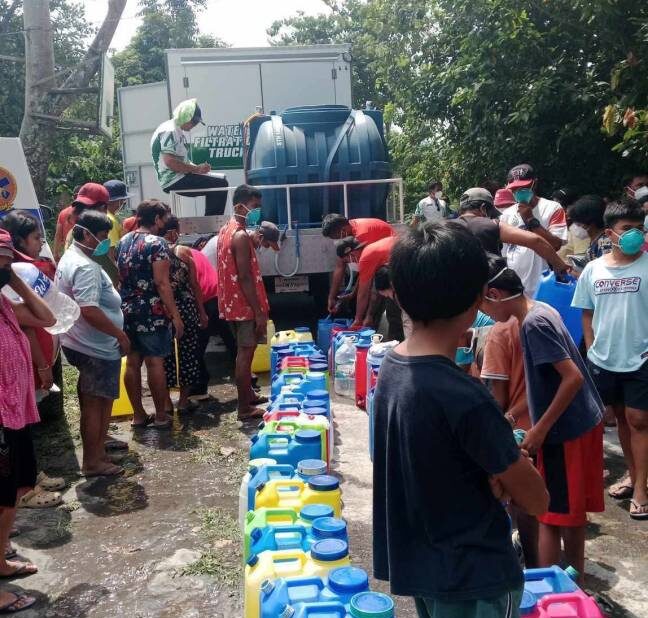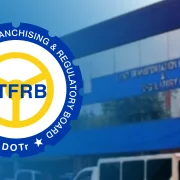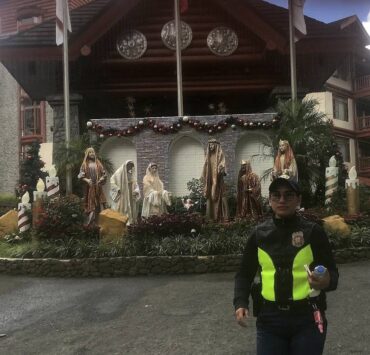Ashfall taints water in Negros Occ. city

BACOLOD CITY—Spring water sources in Bago City in Negros Occidental were contaminated after several villages in the city were hit by ashfall and sulfuric fumes when the restive Mt. Kanlaon had a minor but explosive eruption on Feb. 15.
Dr. Merijene Ortizo, head of the City Disaster Risk Reduction and Management Office, said most affected were the springs in Barangay Mailum, which served as sources of drinking water for communities in the area.
The Bago City Health Office said it has sent sanitary inspectors to Mailum to get water samples for laboratory analysis.
Ortizo said residents have been advised not to drink water in those areas.
Potable water was being delivered to residents of Mailum, many of whom live in remote areas, starting on Sunday.
“The Negros Occidental provincial government water tanker with filtration system is delivering water (to the affected residents),” Ortizo said.
Sulfuric stench, she said, also remained in Mailum on Monday and the city government has delivered face masks to residents.
In the absence of face masks, residents were advised to use wet cloths as cover as well as to close their windows and doors.
Ortizo said the 9,827 residents of Mailum were affected by the ashfall and sulfuric stench from Kanlaon volcano.
Cleanup begins
“Ashfall cleanup operations were underway,” Ortizo said.
She said the ashfall and sulfur, which are corrosive, were also expected to affect rooftops in the affected areas.
The volcano had a minor explosive eruption that caused significant ash emission at 2:32 p.m. last Feb. 15, according to the Philippine Institute of Volcanology and Seismology (Phivolcs).
The event lasted for eight minutes based on the seismic record and generated a plume that rose 1,500 meters above the crater before drifting to the west-northwest.
Ma. Antonia Bornas, Phivolcs Volcano Monitoring and Eruption Prediction Division chief, said a second ash emission was also recorded at Mt. Kanlaon at 5:55 p.m. on Saturday that lasted for four minutes.
Ashfall and sulfurous smells hit Bago City’s villages of Mailum, Dulao, Ma-ao, Binubuhan, Abuanan, Antipuluan, Ilijan, Tabunan and Bacong.
Prior to the minor explosive eruption, the sulfur dioxide flux at Mt. Kanlaon was measured at an average of 2,625 tons, less than the medium-term average of 4,440 tons per day since June 3, 2024, the Phivolcs said.
The eastern upper slopes of Mt. Kanlaon have been undergoing inflation or swelling since Jan. 10, while inflation-deflation cycles have been recorded on the western upper and eastern middle slopes for the same period.
The volcano erupted on Dec. 9 last year, displacing thousands of residents in localities in Negros Occidental and Negros Oriental that surround the volcano.
About 10,000 residents are still in various evacuation centers up to this time as entry into the volcano’s 6-kilometer danger zone remains prohibited.
The Phivolcs said the current ground deformation behavior of Mt. Kanlaon is likely the result of occasional plugging and unplugging of the volcanic conduit, causing weakened degassing and eruptive activity at the crater, a pattern of unrest that may be expected while similar levels of monitoring parameters persist.
Alert level 3 (magmatic unrest), raised after the Dec. 9 eruption, still prevails over Kanlaon volcano.
This means that magmatic unrest could generate similar ash emission and even short-lived explosive eruptions in the short term which may generate life-threatening volcanic hazards, the Phivolcs said.

















